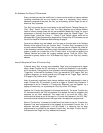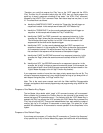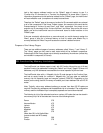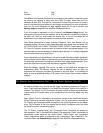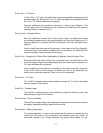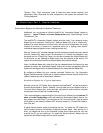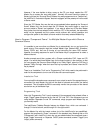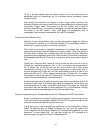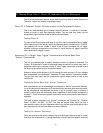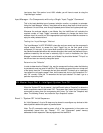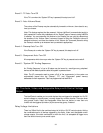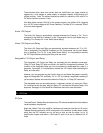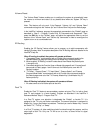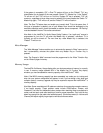29
However, if the user decides to skip a song on the CD, you simply reselect the “CD”
Master Key to access the song skip button. Normally this would reset the system to
Stereo, but since the “Surround Sound” Master Key was programmed as a “Feature Key”,
the IntelliFile II’s “Automation Bypass” feature is engaged, and the preamp will not be reset
to Stereo mode.
Since the “CD” Master Key was the last source selected before pressing the “Surround
Sound” Master Key, the normal steps the CD Master Key would trigger to reset the
surround mode to “Stereo” are bypassed. If you were to press any of the other Master
Keys (rather than the last selected, which would be “CD” in this example), the automation
would not be bypassed and the system would continue with normal operation and
configure the system to the default surround mode for that newly selected Master Key.
How to Program “Component Power” for Multiple Master Keys which Share a
Common Source
It is possible to use more than one Master Key to automatically turn on and control the
same source. One example might be multiple Master Keys (labeled HBO, Showtime,
Disney, ESPN, etc.) that are all turning on and controlling the same DSS receiver.
However, the ending sequence for each of the Master Keys is programmed to select a
different channel.
Another example would be a system with a Pioneer combination DVD, Laser and CD
player. You would label three Master Keys for the three functions in the machine, so that
you can program the Surround Sound Mode to be “Dolby Digital” when the DVD key is
pressed, “Dolby ProLogic” when the Laser Disc key is pressed, and “Stereo” when the CD
key is pressed.
There is an “Installation Trick” and a “Programming Trick” which need to be performed in
order for the component to turn on and off as the end-user would expect:
Installation Trick
You must split the shared source component’s sync output to each of the appropriate sync
connections for each Master Key that will be used to automate and control the shared
component. This will enable the MSU to accurately monitor the sync status of the shared
source from any of the Master Keys.
Programming Trick
Note: this “Programming Trick” is only necessary if the component being shared utilizes a
single ”Toggle” power command to turn the unit “On” and “Off”. If the component you are
using features “Separate On and Off” commands, simply program each Master Key as
you normally would.
The IntelliControl Tabletop Remote features ten Master Keys, which are numbered 1
through 5 in the left column, and 6 through 10 in the right column.
For the Master Key with the lowest number (out of the IntelliControl’s ten possibilities),
program the component’s “Power” command in the standard way. Meaning that on the
“Components” tab in IntelliFile II, when the you are asked whether the component uses a
single “Toggle” command, or “Separate On/Off” power commands, answer “Toggle” (one
“single” power command).




